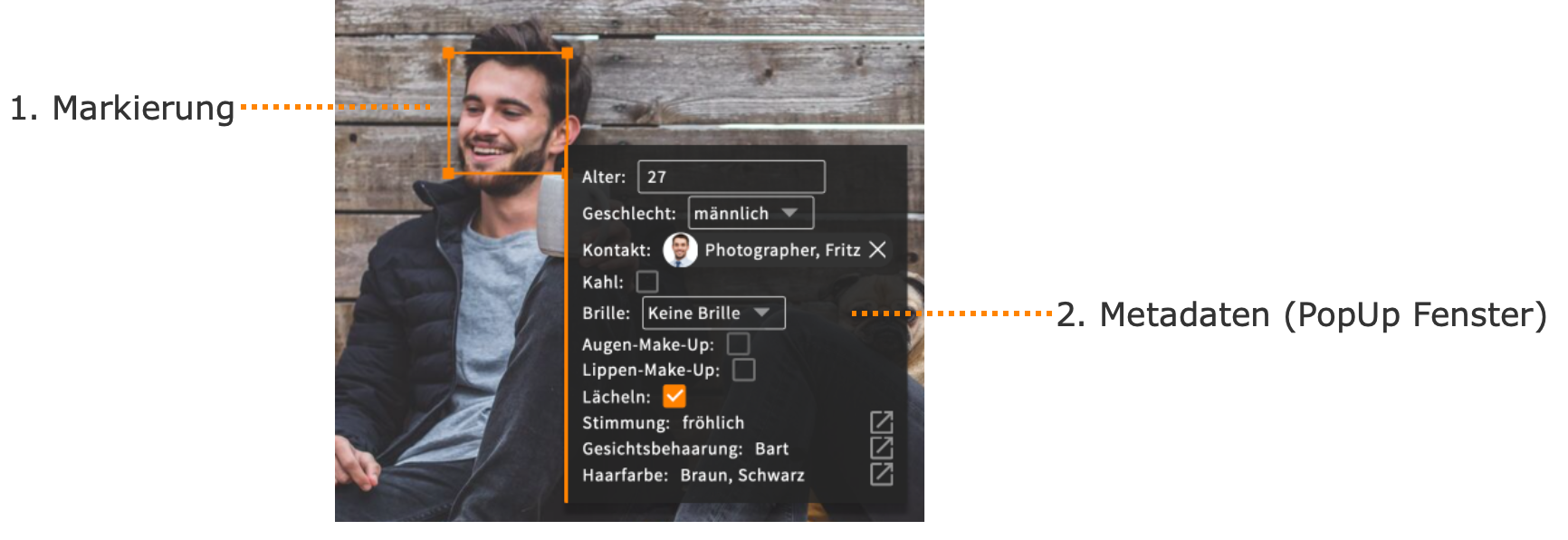Face Recognition
AI Tagging – Face Recognition is used to recognize people’s faces on images, extract their properties as metadata, and tag them on the dataset or file.
After an image file is uploaded, the 4ALLPORTAL automatically passes on the file to Microsoft Cognitive Services and performs the face recognition and computer vision services. The extracted metadata and the positioning data for marking the face on the image are passed back to the 4ALLPORTAL and tagged on the corresponding image file.
This function involves recognizing, not identifying, human faces. The extracted metadata does not include any personal information.
See also under “2. Metadata (Pop-up window)”.
Updated Face Recocgnition
To prevent stereotyping and discrimination, the Azure Face Recognition API stops supporting the following attributes by the end of June 2023:
- age
- gender
- bald
- eye make-up
- lips make-up
- smile
- mood
- facial hair
- hair color
As a consequence, these attributes are no longer automatically recognized as metadata, nor are they set (details about this decision can be found here).
In the user interface, the fields for these attributes are no longer displayed. Exception: If the fields for these attributes already contain values, they will still be displayed.
Note: Action "Refresh preview" also updates the Face Recognition. As a result, values already set for the attributes no longer supported, will be cleared.
These changes affect AI Tagging versions 5.0 (supported from Core Engine version 4.0) and 4.0.1.
Page content

1. Marking
When you hover over a marking with the cursor, the corner points for adjusting the size of the marking are activated. You can change the size of the marking or delete the marking.
- Left-click and hold on one of the corner points.
- Drag the cursor to adjust the size of the marking.
- The new position is saved automatically.
- By pressing the “delete” key, you irrevocably delete the marking and the metadata
(You can use the “Recompute preview” to carry out the face recognition process again. You may need administration rights for this function to be available in the toolbox.)
The accuracy of the extracted and tagged metadata of image content is dependent on the performance of Microsoft Azure Cognitive Services. For example, the mood could be incorrectly recognized.
Where necessary, the user can edit the metadata in order to correct such errors.
2. Metadata (Pop-up window)
- When you click on the marking, a pop-up window will open to show you the extracted metadata.
Available metadata in the product standard:
• Age (number)
• Gender (male/female)
• Manual linking to a personal contact from the Contact module (not part of the automatic metadata tagging)
• Bald (head hair)
• Glasses (no glasses/glasses)
• Eye makeup (yes/no)
• Lip makeup (yes/no)
• Smile (yes/no)
• Mood (happy/neutral)
• Facial hair (none/beard/sideburns/moustache)
• Hair color (brown, black, red, blond or a combination of two hair colors) - Click on a metadata field (checkbox, dropdown or selection pop-up) to edit the extracted metadata.
Microsoft Azure Cognitive Services supplies the position data for visualizing the marking around a face/object to the 4ALLPORTAL. Depending on the quality and rendering of image content, it is possible that the position may be inaccurate in some cases. Where necessary, the user can therefore manually correct the marking.